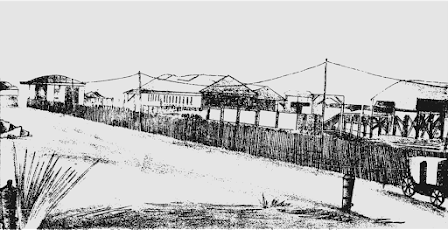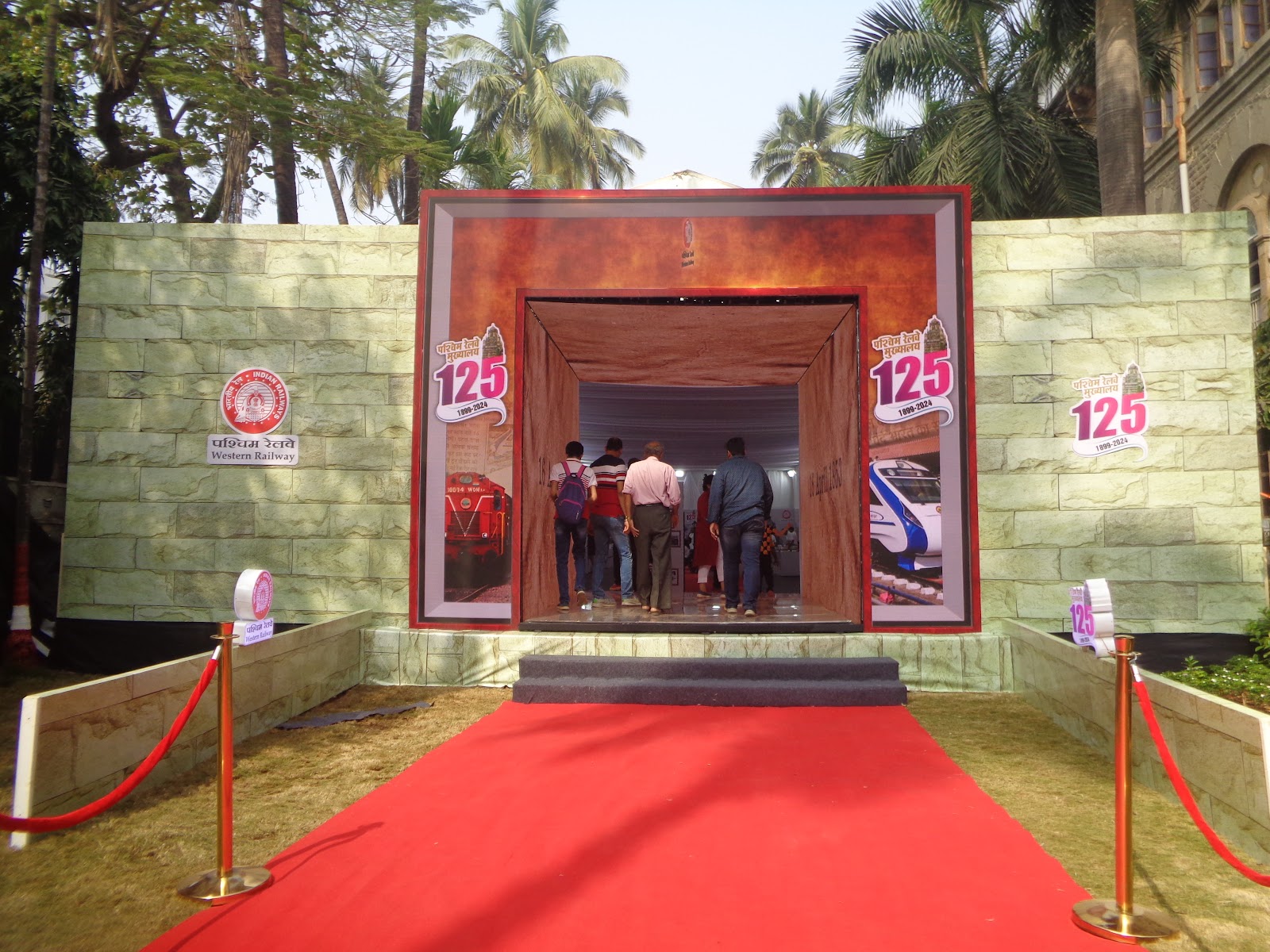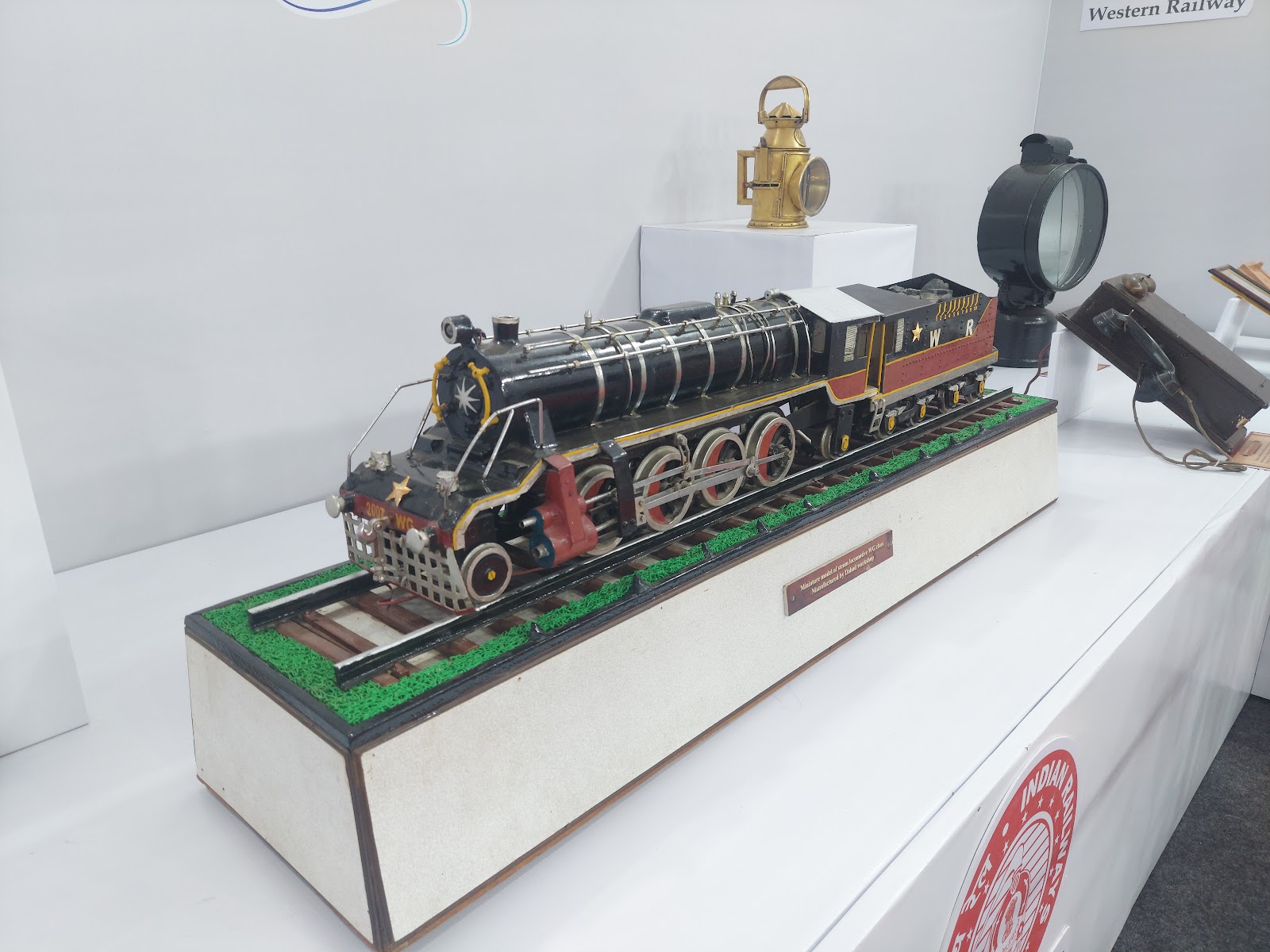Today, the 16th of April, 2024, completes 171 years of the Indian Railways. It was today, on a Saturday afternoon in 1853, that the first official passenger train chugged on iron rails laid on the country's soil. For those who witnessed it, it was an awe-inspiring event, for never before had the native population of India seen a steam chariot pulling hundreds of passengers in such a grandeur. The railway had arrived, and was on its way to redefine history, culture, and economy. Superstitions were broken, myths resolved, and the geographical extent practically shortened. And it all started from the 34 kilometers from Bori Bunder to Thana.
The railways were envisioned in India for a multitude of reasons. Railways could provide a means for swift transportation between regions, making commerce and governance easier. It could convey goods from throughout the country, to economic hubs, such as port cities, benefiting trade. The aid in transport of cotton was one of the major reasons for the bringing of railways in India.
Bombay was one such city. Its position on the Western coast allowed for easy transport of goods through maritime means. It was just alongside the Bombay Harbour, where ships would regularly dock. Further the British had established a strong foothold in the city, being in possession of the archipelago of Seven Islands since 1661. A fort had been constructed on the Bombay Isle (being one of the seven Islands) in 1769, named Fort George, after the then British emperor. By 1838, the Seven Island had been linked by the Hornby Vellard reclamation project. Despite this, the region around the Fort remained the single most developed region for quite a while.
The first Railway line between two cities had been inaugurated back in 1825, the Stockton-Darlington Line in the Great Britain. The first major intercity railway was the Liverpool and Manchester railway, which commenced operations in September 1830. The technology just had to make its way to the port of Bombay. And that happened in the decade of 1840s. Around this time, several began raising plans for a rail network in Bombay. They knew that Bombay would benefit immensely from this new and rapid means of conveyance. The first formal proposal was put forward by Colonel G.T. Clark in 1843.
The plans were further motivated by enthusiastic businessmen, social reformers, like Sir Jagannath Shankerseth, Sir Jamsetjee Jeejeebhoy, and even British gentlemen like Sir John Chapman. He was among the more prominent figures behind the advent of railways in India. In 1845, he, along with a group in England, formed the Great Indian Peninsula Railway. This group from England was merged with the one in Bombay (called the Bombay Great Eastern Railway), and was collectively tasked to lay a rail line in Bombay. The Great Indian Peninsula Railway (GIPR) was finally incorporated on 1st August 1849, by the Act of British Parliament. The contracts were finalized, and the company was tasked with constructing a 21 mile (34 km) experimental line between Bombay and Tannah. The sod turning ceremony took place on 31st October 1850, at Sion.
Now with the aims straight, some problems were to be confronted with. The country was tropical, ridden with unfamiliar terrain, and wildlife, and this was to be the first project of such a scale to be realised in the country. Problems appeared sooner than later. For one, there was a large marshland at Sion, with no stable land to lay tracks on. A clever approach utilized the quarried material from the nearby Sion hill, and mangroves were used along with the soil, to create a firm bed on top of the murk. And soon after the works commenced, well, the rains poured heavily, slowing progress down. And the work was to be carried out by native labour, which too was fairly untrained. That brought out issues of its own, since local superstitions, and native beliefs, and practices came into the picture. Nonetheless, work went on, and by the end of 1852, the line from Tannah to the Sepoy Lines close to today's Masjid Bunder).
It is interesting to note, that on 18 November 1852, the officials of GIPR, along with their friends had conducted an inspection of the entire line on a train, about 6 months before that official ride in April 1853. It was pulled by a shunting locomotive, Lord Falkland (named after Bombay's then governor) all the way from Sepoy Lines, to Parsick point (at Parsik Hill, much ahead of Tannah stn). This is a wonderful story per se, and if you're interested, I've written on it as well!
It was 1853. All was ready for all that was awaited. The journey was set to occur from the rail terminus at Bori Bunder (near the Fort George's Bazaar Gate), all the way till the station at Tannah. And the celebrations were to be held at the Bori Bunder station.
 |
| The Bori Bunder Terminus, 1854 |
The inauguration was to take place, but as fate would have it, Bombay again received heavy thunderstorms. So the new date was Saturday, the 16th of April.
On April 8th, the GIPR published its timetable in the local news daily, The Bombay Times and Journal of Commerce (which would later be named The Times of India). The advert detailed train routes, timings, fares, and other basic information. I'll put links to originals at the bottom.
And finally came the day, on which the long wait was to culminate. A Public holiday had been declared in Bombay, and several honorable dignitaries had been invited to the special occasion. The governor of Bombay, wasn't able to attend, but his wife, Lady Falkland made her presence at the ceremony.
For the historical event, several preparations were made. The 300 ft long station platform at 19 acre Bori Bunder station was neatly matted. It was curtained with a white screen on the western side so as to block both the glare of the sun, and the dust blowing afternoon wind. To make the sight more cheerful, the screen, and the platform ceiling was festooned with flags and coloured cloth pieces. At the front lay the ensign of St George, but was soon replaced by the Royal Union Jack.
The train itself was quite interesting. It was hauled by three Tender Locomotives of the classification GIP-1, built in 1851 at the Vulcan Foundry at England, and joyfully named Sindh, Sultan, and Sahib. These would together pull a chain of 14 carriages, consisting of First, Second, and Third class coaches, along with a state carriage, and a carriage for the Governor's Band.
 |
| My Sketch of a GIP-1 Locomotive (for copyright reasons) |
At 2 o' clock, the invitees began assembling at the platform. Soon, the platform was tightly filled with European Ladies and European and Native Gentlemen. By around 3 p.m, the Masters of Ceremony for the event, Captain Barr, and the GIPR Traffic Manager, D.M.Roche, began allotting places to the ladies, following which, the gentlemen were asked to secure for themselves a seat. The State carriage was occupied by among the more important individuals. With most accommodated soon, the platform was fairly empty by 3:15 p.m.. At exactly 3:30 p.m, canons were fired from the ramparts of the nearby Fort George. The train, with its 400 passengers, left for its maiden journey at 3:35 p.m, up for an exciting journey to Tannah.
As the train chugged forwards, it passed through a crowds of thousands. Men, women, and children looked on from wall tops, windows, temples, houses, masts of Arab Bungalows, even from the branches of trees! Every person in that region was certainly enthusiastic enough so as to not miss a glimpse of it. And Bombay being a trade hub, people from all around the world were effectively present to witness this grand sight.
The train, after departing, initially went along, a straight route, followed by an S-shaped curve (which still exists) to reach its first stop at Byculla. Byculla too was, back then, a humble station with nothing more than some structures on two platforms. It was close to the Byculla Mankeshwar Temple, which appears in several old photos of the station. The station has since been moved north, but the temple still exists.
 |
| Byculla Station, 1854 |
The train then moved toward Sion. At Sion, water was filled in the engines, along with their wheels greased. After departing from the station, the train entered Salsette, the island of sixty villages. The scene here was similar, with the residents of villages crowding on both sides to have a look. The train had its final intermediate halt at Bhandup. After that, it moved straight towards Tannah. The entire journey occupied 57 mins start to finish. The maximum speed being around 30 mi/hr(48 km/h)
At Tannah, a crowd lined on the sides thickly for more than a mile (1.6 km). It had to be kept in control by the Ghat police. Upon their arrival, the Passengers of the inaugural train were welcomed with large Durbar tents, under which they could have a tiffin, and some rest.
Soon followed the National Anthem, after which some notable gentlemen took their parts in delivering speeches. The first was the company chairman, Major Swanson who acknowledged the interest of the governor in his attendance, in lieu of his presence. He was followed by Sir William Yardley, who, began by asserting that the day of "16th April 1853 was, and will continue to be one of the most memorable days, if not the most memorable day in the annals of British India". In his ensuing long speech, he mentioned how the experimental line to Callian (Kalyan) was completed in a solid state, for an amount 20% less than estimated. He also talked about the native labour, stating that they proved to be "most intelligent, and industrious", and they, on working on the line, earned 4 to 5 times what they would have as rude and uninstructed labour.
Several expressed their joy and satisfaction. But I'd like to focus on the line's Chief Engineer, James John Berkeley. And that's for a reason. He expressed his joy with stating how around 500 people had been conveyed till Tannah in a great public event, in a short time. He then wished to mention certain facts from his experience, that could "inspire public confidence in similar undertakings".He said that the country provided enough to facilitate the entire construction. He then said that they were able to maintain a vigilant superintendence. He then praised the native labour, saying they "far exceeded our expectations". He spoke of the several native troops, whom he praised of their docility and discipline. He also spoke that immense potential lay, even in the lowest classes of the natives, and they were "capable of becoming skillful and handy artisans". He then declared his thanks to the contractors, Messrs. Faviell and Fowler, completing in a energetic and satisfactory manner.
After some more speeches came the time to wrap up. The tents were closed by 6 o' clock, as the passengers were to now depart for their return trip. They entered their carriages, and set off for Bori Bunder, which they reached at 7 p.m., after journeying for 40 mins. The passengers, left, with a jolly emotion, cheering others, who returned the enthusiasm and heartiness.
Two days post the event, on 18th April, newspaper like the Bombay Gazette, and The Bombay Times, reported the historic event in their columns (the entire page in case of the former). On the same day, regular trains were dispatched on the route. In that, month, 21,992 passengers had traveled, which rose to 61,413.5 in December. Season tickets were issued next year in 1854, and in the same year, the line was extended till Callian (Kalyan). In 1863, Bombay was finally connected to Poona, through the Bhor Ghat. Essentially, all went full steam ahead.
There was no turning back. The railways had reached, India, and were all set to redefine its economy, culture, and beliefs. Soon, the rail web spread throughout the subcontinent, reaching even the more remote regions. It contributed to the country's progress, and grew with it. Several developments were imminent, and the legacy continued even after we became free.
The railway remains, till date, among the most popular mode of travel, also among the most affordable. There would be few Indians, who cannot relate to railways today. They were, and still are the lifeblood of the nation. And it had its humble beginning from a 21 mile experimental line between Bombay and Tannah.
Thanks for the long scroll!
Links-













.png)

































